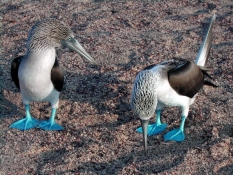Queens
College/CUNY
Education Unit
Spring 2014
Science Content Recommendations from NCATE and NSTA
| Elementary - generalist | Elementary - middle | All Secondary | Secondary - Biology | Secondary - Chemistry | Secondary - Earth, Space | Secondary - Physics |
C.5. Recommendations for Teachers of Physics
C.5.a. Core Competencies . All teachers of physics should be prepared lead students to understand the unifying concepts required of all teachers of science, and should in addition be prepared to lead students to understand:
- Energy, work, and power.
- Motion, major forces, and momentum.
- Newtonian principles and laws including engineering applications.
- Conservation of mass, momentum, energy, and charge.
- Physical properties of matter.
- Kinetic-molecular motion and atomic models.
- Radioactivity, nuclear reactors, fission, and fusion.
- Wave theory, sound, light, the electromagnetic spectrum and optics.
- Electricity and magnetism
- Fundamental processes of investigating in physics.
- Applications of physics in environmental quality and to personal and community health.
C.5.b. Advanced Competencies. In addition to the core competencies, t eachers of physics as a primary field should be prepared to effectively lead students to understand:
- Thermodynamics and relationships between energy and matter.
- Nuclear physics including matter-energy duality and reactivity.
- Angular rotation and momentum, centripetal forces, and vector analysis.
- Quantum mechanics, space-time relationships , and special relativity.
- Models of nuclear and subatomic structures and behavior.
- Light behavior, including wave-particle duality and models.
- Electrical phenomena including electric fields, vector analysis, energy, potential, capacitance, and inductance.
- Issues related to physics such as disposal of nuclear waste, light pollution, shielding communication systems and weapons development.
- Historical development and cosmological perspectives in physics including contributions of significant figures and underrepresented groups, and evolution of theories in physics.
- How to design, conduct, and report research in physics.
- Applications of physics and engineering in society, business, industry, and health fields.
C.5.c. Supporting Competencies . All teachers of physics should be prepared to effectively apply concepts from other sciences and mathematics to the teaching of physics including concepts of:
- Biology, including organization of life, bioenergetics, biomechanics, and cycles of matter.
- Chemistry, including organization of matter and energy, electrochemistry, thermodynamics, and bonding.
- Earth sciences or astronomy related to structure of the universe, energy, and interactions of matter.
- Mathematical and statistical concepts and skills including statistics and the use of differential equations and calculus.
